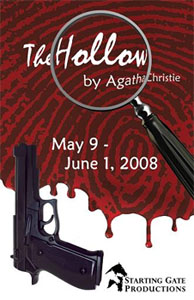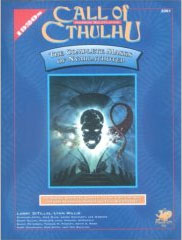Let’s talk a little bit about save-or-die effects.
If you participate in any kind of discussion around game design and D&D, the term is probably familiar to you. If you’re not familiar with it, then here’s the short version: As the name suggests, a save-or-die effect is any spell or ability which requires the target to make a saving throw or die. More generally, the term can also be applied to any spell or ability which requires the target to make a saving throw or be effectively removed from play.
For example, finger of death is a a classic save-or-die spell: Either the target makes their saving throw or they die. A sleep spell is also a save-or-die effect, however, because if the target fails their saving throw they’re knocked unconscious. On the other hand, a fireball spell is not a save-or-die effect: Although the damage from the spell might kill you, your death is not the direct result of a failed saving throw.
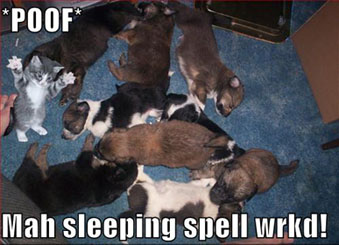
A save-or-die effect with practical results.
THE CONTINUUM OF SAVE-OR-DIE EFFECTS
As our examples suggest, there is actually a continuum of save-or-die effects — ranging from the minor to the severe. In generic terms, I think this continuum can be defined this way:
(1) The effect takes the character out of play, but the character itself can take actions (usually additional saving throws) to put themselves back in play. For example, a hold person spell (which we’ll talk about more later) paralyzes the target on a failed save, but allows the target to make a new save each round to recover.
(2) The effect takes the character out of play, but other characters can take trivial actions to put them back into play. For example, a sleep spell works like this — another character can simply take an action to slap the character and wake them up.
(3) The effect takes the character out of play, but other characters can put them back in play if they have the right resources prepared. For example, any paralysis can be removed if you have a remove paralysis spell available.
(4) The effect kills the character.
It should also be noted that, beyond a certain point, the difference between the third and fourth categories becomes largely academic: A paralysis effect requires remove paralysis; a finger of death requires a resurrection. From a mechanical standpoint, at least, the difference is merely one of degree.
THE PROBLEM WITH SAVE-OR-DIE EFFECTS
Save-or-die effects are widely recognized as being one of the weak points in 3rd Edition. The basic problem with them can be summed up in three words: They aren’t fun.
(1) They aren’t fun to suffer.
(2) They aren’t fun to use.
(3) They break down badly at higher levels of play.
Nobody likes to have bad things happen to their characters, but the truth is that — no matter how much we might argue about hit points — D&D combat is fun. It’s stood the test of time for more than three decades now, and people are still enjoying it.
One of the things that’s fun about it is the ablative nature of hit points — the back-and-forth dynamic of dealing damage. You may not want to get caught in a fireball, but part of the excitement of playing the game is suffering that damage. I think everyone who has ever played the game has a story about the time that they managed to save the day while only having a single hit point left to their name. That’s a story that captures the simple, pure fun that Gygax and Arneson captured in the D&D combat mechanics.
But save-or-die mechanics bypass the whole ablative damage system. As a result, when a save-or-die ability hits the table you are instantly stripping away all the tactical complexity of the combat system and reducing the entire thing to a craps game.
So when a save-or-die effect is used against a PC, it’s no fun: On the basis of a single die roll, the player is no longer allowed to participate in the game. Imagine that, at the beginning of Monopoly, you had to roll 2d6 and — if it came up snake eyes — you automatically lost and didn’t get to play that game. Doesn’t sound like much fun, does it?
But it’s equally true that using a save-or-die effect isn’t particularly fun, either. Oh, sure, lots of people have stories about the time they killed an ancient red dragon with a single lucky hit from a finger of death. But while that’s fun once or twice, how much fun is it in the long-term? Imagine that game of Monopoly again, only this time if you roll box cars on the 2d6 you automatically win the game. Still doesn’t sound like much fun, does it?
And this leads to the breakdown at higher levels of play, where astronomical hit point totals and incredibly high saving throw bonuses turn combat into a giant game of: “Hey, who’s going to roll a 1 on their saving throw first?”
THE CHEAPENING OF DEATH
I have an aesthetic problem with D&D in general: I dislike the revolving door of death. This is a problem I’ve talked about before, but it’s one that has an impact on save-or-die effects at the gaming table.
Specifically, I don’t like cheapening death. Therefore, I’m unlikely to use save-or-die effects on my PCs. But my players have no such compunction — they’re perfectly free to use those spells and effects against their opponents. As a result, this creates an imbalance of power.
This isn’t strictly a mechanical problem, but it does highlight how a particular aesthetic desire can have a meaningful impact on game balance.
WotC’s SOLUTION
As I mentioned, the problem with save-or-die effects has been well understood for several years now. The designers at Wizards of the Coast have been trying to deal with the issue since at least 2002 (when they released the Epic Level Handbook and discovered that the save-or-die effects were causing a complete meltdown in high level play).
With the release of D&D 3.5 in 2003, this newfound awareness translated into some rather half-hearted attempts at fixing the problem. Lots of save-or-die effects were still left scattered all over the core rulebooks, but some of the most problematic examples were fixed.
The solution they came up with was, basically, to weaken the save-or-die effect and move them down the continuum we talked about earlier. For example, in 3.0 hold person was a save-or-die effect of type #3: If you failed your save, you were paralyzed until either the spell ended or someone used a remove paralysis spell on you.
In 3.5, on the other hand, hold person was turned into a type #1 effect: If you became paralyzed, you could continue making saves every round until you succeeded (and stopped being paralyzed).
In 4th Edition, this remains their solution of choice. For example, in 3rd Edition a sleep spell was a save-or-die effect of type #2. In 4th Edition, if the spell successfully affects its target it only slows them. Only an additional failed save results in them falling asleep, and then they can continue making saving throws every round until they wake up.
Plus, in 4th Edition saving throws are always strict 50/50 affairs — there are no modifiers. So you can quickly calculate that there’s only a 50% chance a victim who has been affected by the spell will fall asleep at all; and only a 0.9% chance that they’d stay asleep for even 1 minute.
You can quickly see how watering down save-or-die effects remove most of their pernicious effects. There’s only one problem, though: This watering down also tends to remove most of their utility and flavor, too.
This is part of a wider trend at WotC in which efforts to make the tactical combat portion of the game as perfectly balanced as possible cause them to offer up every other part of the game on a sacrificial altar.
A DIFFERENT SOLUTION
I think the wider problem with WotC’s solution of choice is that it’s basically like saying, “Man, this soup tastes like crap! I think I’ll try adding some more water to it.” The taste of crap is now a little less intense, but it’s still crap.
The problem with save-or-die mechanics is that they bypass the ablative combat mechanics that work so well. So here’s my thought: Instead of just watering these effects down, let’s change the paradigm entirely and tie them into the ablative damage system.
The simplest solution is to simply have save-or-die effects deal ability score damage. For example, in my house rules all death effects deal 4d6 points of Constitution damage. If the spell has a secondary effect — such as turning the victim into a pile of dust — this effect only happens if the victim is killed by the Constitution damage. Similarly, you could have paralysis effects dealing Dexterity damage.
If I was completely overhauling the system, I would — at the very least — vary the amount of ability score damage depending on the power of the effect in question. For example, death effects might vary from 2d6 to 4d6 points of Con damage depending on whether you were talking about a 6th-level spell or a 9th-level spell.
But you can also get fancier: For example, if I were redesigning hold person I would make the spell deal 1d6 points of Dexterity damage per round until the victim made a successful save. If the victim is reduced to 0 Dex as a result of the spell, they are paralyzed (as the magical energies of the spell bind their limbs completely).
Similarly, a victim of a medusa’s gaze would feel their limbs turning to stone as they medusa repeatedly inflicted them with 2d4 points of Dexterity damage.
Under this paradigm, there would be no need for a “paralysis” condition — paralyzed creatures are simply those which have been reduced to 0 Dex. Similarly, a spell like remove paralysis would just be a quick way of healing Dexterity damage.
A sleep spell would be a mental assault, inflicting 1d4 points of Wisdom damage per round until the victim makes a save or drops into a magical coma. When the sleep spell wore off, this Wisdom damage — like the damage from a ray of enfeeblement — would be restored.
Since ability score damage no longer exists in 4th Edition, this solution won’t work for that game. But if I end up making the switch, I’ll be looking for some similar means to change the paradigm of save-or-die effects — rather than just watering them down.
UPDATE: If you’re thinking about using a system featuring ability score damage, you might want to check out Super Simple Ability Score Damage.
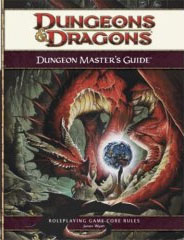 So the 4th Edition of Dungeons & Dragons is coming down the pike and people have recently been asking me what I think about it.
So the 4th Edition of Dungeons & Dragons is coming down the pike and people have recently been asking me what I think about it.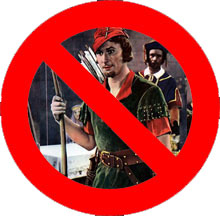 Here’s a sample power taken from one of the pregen characters used in the Keep on the Shadowfell preview adventure:
Here’s a sample power taken from one of the pregen characters used in the Keep on the Shadowfell preview adventure:

